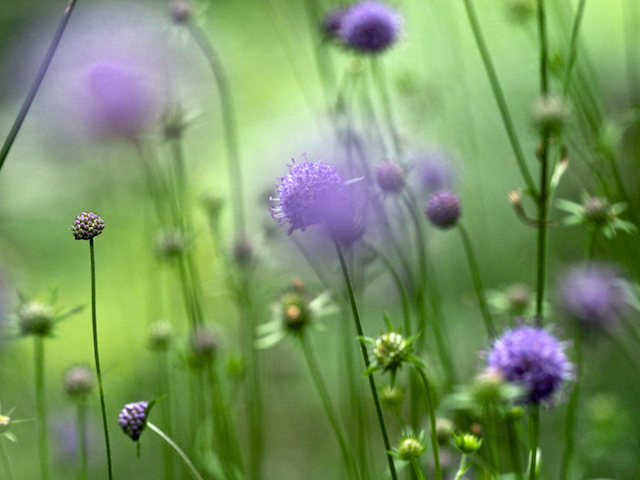Along a damp, shaded ride at the south end of Crow Wood we have a good crop of Devil's bit Scabious. We have avoided driving down the ride for many years and the patch has grown and grown. On a sunny day the flowers, being great nectar carriers, are always covered in insects. The plant, with its pin cushion pale blue flower head, gets its curious name from its truncated root, which legend has it, is the result of a bite from the devil. Its Latin name comes from the verb scabere, meaning to scratch and in days gone by it was used to treat Scabies and even the sores of bubonic plague. Nowadays its just a good plant to have around and one that is tolerant of living in very poor soils, as ours are in the wood. It is in flower now.
On my visit yesterday the flower heads were hosting a rich assembly of creatures even though the sky was cloudy and rain was in the air. A few Slow Worms were keeping warm under the tin sheets; the ants nesting there were less than happy when I lifted the lid on them, the young ants about to pupate. The tin sheets are put there to attract reptiles and usually there is a Grass Snake present too enjoying the warmth, but not this year. I am not sure what has become of them, their disappearance is a bit of a mystery.
 |
| looking through the Scabious patch.... |
 |
| A tiny Crab Spider waits for a fly to settle and the arrival of lunch |
 |
| A hoverfly covered in pollen |
 |
| A Red Admiral butterfly |
 |
| A bumble bee |
 |
| A different species of hoverfly, as a group of insects they are important pollinators |
 |
| a female Slow Worm, only females have the black central stripe |
 |
| the ants' nest, you can see the eyes and limbs of each of the developing ants |












Comments
Post a Comment
Thank you for your comments: